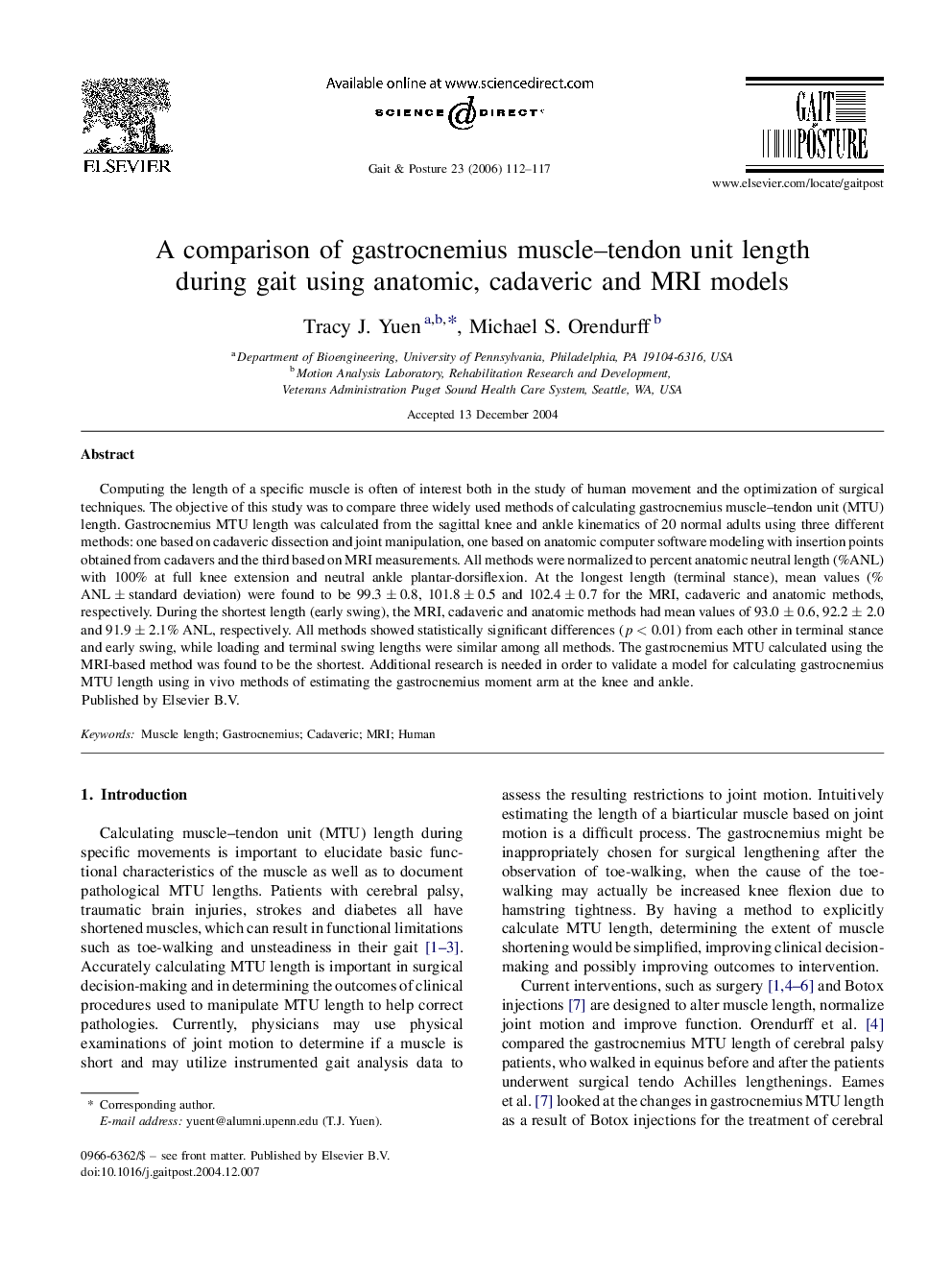| Article ID | Journal | Published Year | Pages | File Type |
|---|---|---|---|---|
| 4058576 | Gait & Posture | 2006 | 6 Pages |
Computing the length of a specific muscle is often of interest both in the study of human movement and the optimization of surgical techniques. The objective of this study was to compare three widely used methods of calculating gastrocnemius muscle–tendon unit (MTU) length. Gastrocnemius MTU length was calculated from the sagittal knee and ankle kinematics of 20 normal adults using three different methods: one based on cadaveric dissection and joint manipulation, one based on anatomic computer software modeling with insertion points obtained from cadavers and the third based on MRI measurements. All methods were normalized to percent anatomic neutral length (%ANL) with 100% at full knee extension and neutral ankle plantar-dorsiflexion. At the longest length (terminal stance), mean values (% ANL ± standard deviation) were found to be 99.3 ± 0.8, 101.8 ± 0.5 and 102.4 ± 0.7 for the MRI, cadaveric and anatomic methods, respectively. During the shortest length (early swing), the MRI, cadaveric and anatomic methods had mean values of 93.0 ± 0.6, 92.2 ± 2.0 and 91.9 ± 2.1% ANL, respectively. All methods showed statistically significant differences (p < 0.01) from each other in terminal stance and early swing, while loading and terminal swing lengths were similar among all methods. The gastrocnemius MTU calculated using the MRI-based method was found to be the shortest. Additional research is needed in order to validate a model for calculating gastrocnemius MTU length using in vivo methods of estimating the gastrocnemius moment arm at the knee and ankle.
